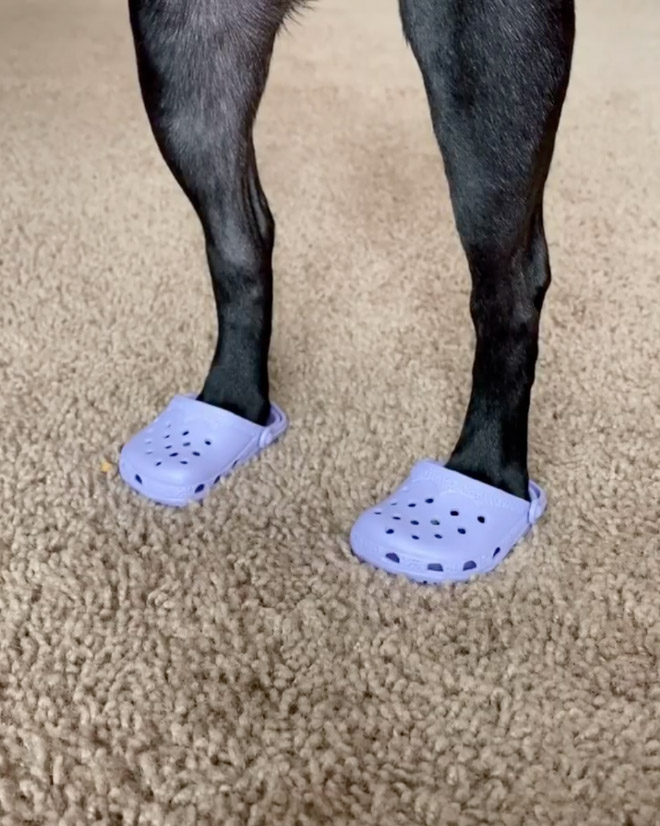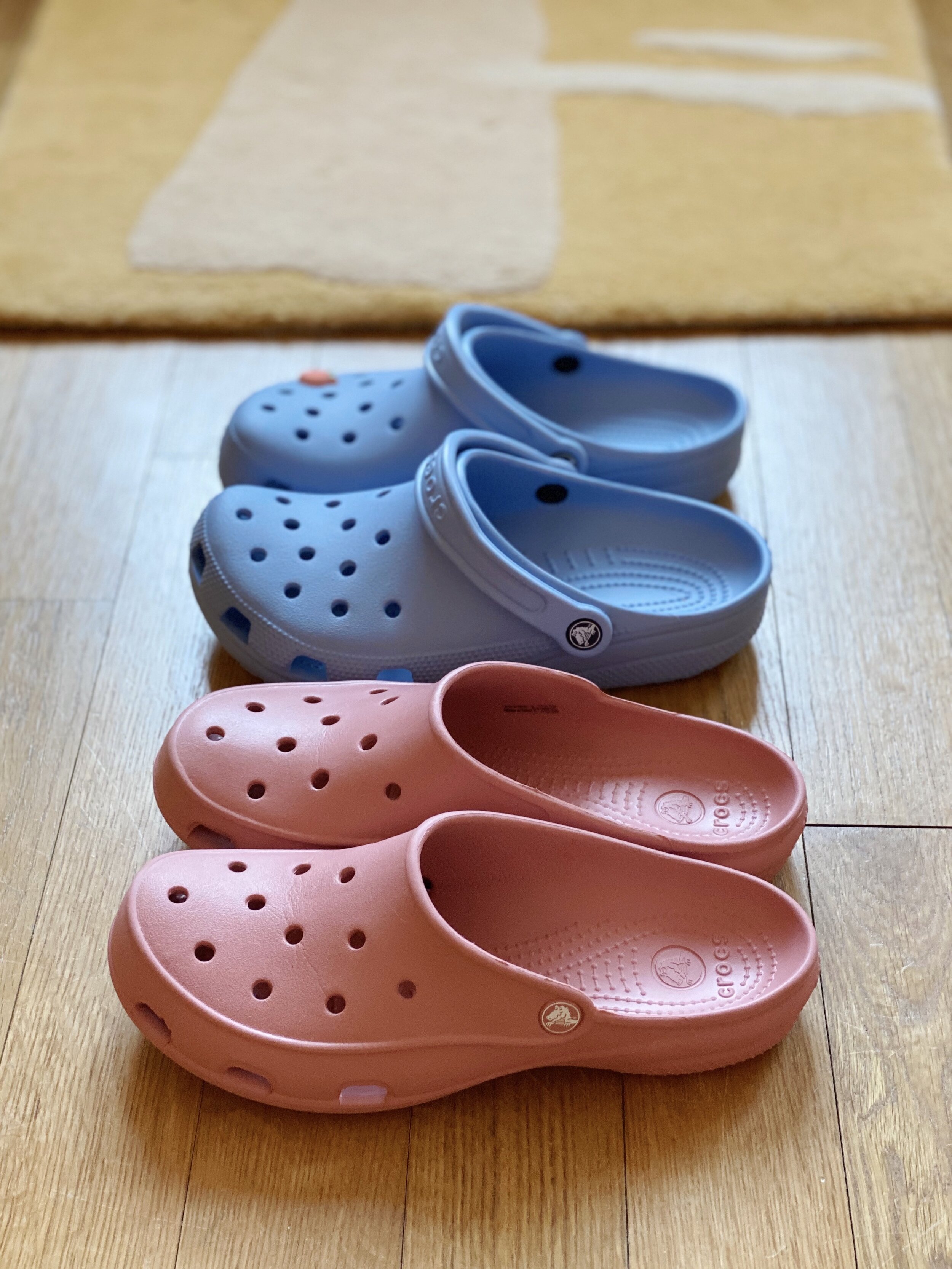Could a pair of Crocs, those ubiquitous foam clogs, ever serve as a substitute for a meal? The simple, unequivocal answer is no; attempting to consume a Croc shoe is not only inadvisable but potentially detrimental to your health.
The debate surrounding the edibility of Crocs has surprisingly gained traction in certain corners of the internet, fueled by a mix of curiosity, misinformation, and perhaps a touch of dark humor. The reality, however, is far less sensational. Crocs are crafted from a material called Croslite™, a closed-cell resin. While the company often highlights its non-toxic nature, framing this property as a potential benefit, it's crucial to understand that non-toxic does not equate to edible or nutritious. Croslite™ is designed for footwear, engineered for comfort and durability, not human consumption.
| Attribute | Details |
|---|---|
| Name | Crocs |
| Material Composition | Croslite™ (a closed-cell resin) |
| Edibility | Not edible; consumption is not recommended and could pose health risks. |
| Toxicity | Non-toxic, but not intended or suitable for consumption. |
| Purpose | Footwear (shoes, clogs, sandals) |
| Nutritional Value | None |
| Primary Use | Casual wear, often associated with comfort and ease of use. |
| Recycling/Repurposing | Recommended alternatives to consumption; recycling programs and creative repurposing are viable options. |
| Company Advice | Crocs strongly advises against eating their shoes. |
| Risk of consumption | Digestive issues, potential discomfort, and no nutritional benefit. |
The myth of the edible Croc likely stems from a misunderstanding of the materials involved and a misinterpretation of marketing claims. Crocs' description of Croslite™ as a non-toxic material, combined with its often-vibrant colors and somewhat playful design, may have led some to speculate about its potential as a survival food. However, the reality is far less appealing. The material, while not inherently poisonous, lacks any nutritional value. Furthermore, consuming a substance not designed for digestion can lead to gastrointestinal discomfort and other health complications.
The notion of eating Crocs to survive is a particularly prevalent element of this urban legend. While the idea is captivating, it is, at best, misguided. In survival situations, the focus is on obtaining essential nutrients and calories to sustain the body. Crocs, devoid of these vital components, would offer no sustenance and, in fact, could hinder the body's ability to function effectively. The energy expenditure required to digest a Croc, coupled with the lack of any corresponding benefit, would render the act counterproductive in a survival context.
Various sources have contributed to the dissemination of this myth. Online articles, social media posts, and even some video content have explored the topic, often in a humorous or sensationalistic manner. Some individuals, driven by curiosity or a desire for viral content, have even gone so far as to film themselves attempting to eat Crocs, further fueling the narrative. It is important to remember, however, that such activities are not only unappetizing but also potentially harmful and should be approached with extreme caution.
It's important to distinguish between the non-toxic nature of Croslite™ and its suitability for consumption. The term non-toxic means that the material is not inherently poisonous in the traditional sense. It doesn't necessarily mean that it is safe for consumption, and indeed, it is not. The absence of toxicity is a safety feature designed to protect the user, not a guarantee of nutritional value or digestive compatibility.
The risks associated with attempting to eat Crocs are primarily related to the body's inability to process the Croslite™ material effectively. The digestive system is designed to break down and absorb nutrients from food. Croslite™, being a synthetic resin, is not designed to be digested. This can lead to a range of unpleasant symptoms, including stomach upset, nausea, and potentially more serious digestive complications depending on the quantity consumed.
The Crocs company itself has consistently and emphatically stated that its shoes are not intended for consumption. They advise against eating their products, recognizing the potential health risks and the lack of any nutritional benefit. This official stance underscores the seriousness with which the company views the issue, reinforcing the fact that Crocs are designed solely for footwear purposes.
The focus on the Croslite™ material also overlooks the other components of a Croc shoe. In addition to the foam resin, Crocs often include various embellishments, attachments, and sometimes even adhesives. Consuming these additional materials would further compound any potential health risks, making the practice even more ill-advised.
The question of whether one could eat Crocs in a survival situation is a critical one. The answer, emphatically, is no. The shoes lack any nutritional value. Furthermore, their consumption would likely result in digestive distress. In a survival scenario, energy and resources are at a premium. Eating a substance that would provide no benefit and potentially cause harm would be a counterproductive and dangerous choice.
The rumors and urban legends surrounding Crocs’ edibility also highlight the importance of critical thinking and reliable information. In an era where information spreads rapidly, it is crucial to evaluate sources and verify claims before accepting them as fact. The Croc eating myth is a clear example of how misinformation can take hold, and it underscores the need for caution and skepticism when encountering unusual or unsubstantiated claims.
Instead of considering Crocs as a potential food source, it is important to recognize their value as footwear. They are designed to protect and support the feet, and they offer a level of comfort and convenience that makes them a popular choice for various activities. Rather than speculating about their edibility, we should appreciate them for their intended purpose.
Ultimately, the question of whether you can eat Crocs is easily answered. You can't and you shouldn't. While the Croslite™ material is non-toxic, it is not designed for human consumption. There's no nutritional value, and the potential for digestive upset exists. Appreciate Crocs for their role as footwear, and leave them out of your diet. Instead, focus on consuming actual food that nourishes and sustains the body.


:format(webp)/https://static-hk.zacdn.com/p/crocs-7292-1413726-1.jpg)
